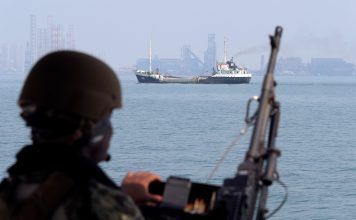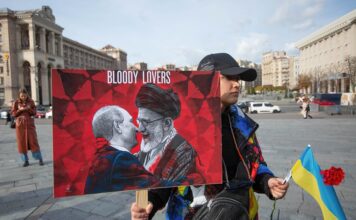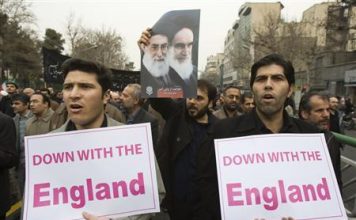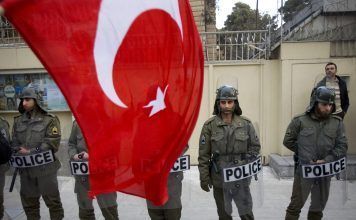By Kayhan Life Staff
At the start of this year, the National Planning Office of the Research Center for Culture, Art, and Communications in Iran released the findings of a survey titled “The Fourth Wave of National Survey of Iranian People’s Values and Views.”
The summary of the survey’s “Social Problems and Harms” segment showed that 92 percent of Iranian citizens were dissatisfied with the country’s current situation.
In its Sept. 8 edition, the Tehran-based Hammihan newspaper said: “Late last year, the National Planning Office of the Research Center for Culture, Art, and Communications of Iran released a survey called ‘The Fourth Wave of the National Survey of Iranian People’s Values and Views.’ Saber Jafari Kafiabad, the head of the National Planning Office, said at that time that the findings from the survey would be published soon. Since then, segments of this survey have been shared with certain researchers, who are gradually publishing their findings.”
EXCLUSIVE: New UN Rapporteur on Iran to Focus on Gender Inequality, Executions
According to Hammihan, 15,878 individuals aged 51 and older from urban and rural households across 15 provinces participated in the recent survey. This survey explored various topics, including ethics, morality, family values, social norms, social trust, social capital, and social issues and harms. The findings from this survey have yet to be published.
In the “Social Problems and Harms” section of the survey, various critical issues have been analyzed, including the most pressing concerns facing the country: its current state, environmental risks, the safety of individuals’ property and belongings within society, feelings of security in urban areas and on the streets, the overall stability of Iran’s existence, and job security within the community.
Regarding public security, 54.8 percent of those surveyed indicated that they do not feel their property is secure, while 33.3 percent believe that their property and that of others in Iranian society are largely safe under the current circumstances.
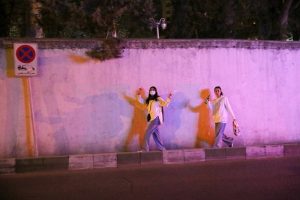
In a different section of this survey, 55.2 percent of participants said they felt safe in the city and on the streets, while 33.7 percent expressed the opposite.
The survey participants highlighted the primary challenges confronting the nation and expressed their levels of concern as follows: 81.9 percent for price and inflation, 47.9 percent for unemployment, 26.9 percent for addiction, 13.1 percent for economic and administrative corruption, 12.1 percent for housing issues, 11.9 percent regarding the hijab issue, 10.7 percent concerning youth marriage, 7.1 percent for divorce, 5.7 percent related to water shortages, and finally, 4.7 percent for noncompliance with the law.
While 69 percent of those surveyed said that water supply issues were their primary concern, 31.6 percent pointed to air pollution, 21.1 percent cited earthquakes, and 21.2 percent highlighted deforestation as the country’s critical environmental threat in the near future.
In this section, 4.2 percent of survey participants identified the restriction of freedom of speech and the press as the most significant issue in Iran, while 2.6 percent pointed to air pollution, dust, and haze as their primary concern.
When asked the question: “Among the people, there are three opinions regarding the country’s current state; which perspective do you consider accurate?” 61.6 percent of those surveyed said that improvements could be made through reforms, 30.2 percent believed that the country’s situation was beyond improvement, and 8.2 percent stated that the current circumstances are satisfactory and justifiable.
Among those surveyed, 65 percent of female participants felt reforms should improve the current circumstances, while 58.3 percent of male participants shared this viewpoint.
The analysis of the survey results by province indicated that residents of the northwestern province of West Azerbaijan exhibited less optimism regarding the country’s circumstances than individuals from other regions in Iran. Specifically, 40.1 percent of respondents from West Azerbaijan expressed the belief that the situation in the country is unlikely to improve.
Following West Azerbaijan, 37.9 percent of participants from the western province of Kurdistan also shared a pessimistic outlook on potential improvements in national conditions.
In a different section of this survey, referencing sociologists and social researchers, 61.6 percent of the participants believed reforms are necessary to improve the current situation. In comparison, 30.2 percent believed that the country’s circumstances could not be improved.
Sociologist Simin Kazemi emphasizes that only 8.2 percent of survey respondents find the current situation acceptable, which is a crucial observation. It shows that a large portion of society is dissatisfied with the existing conditions. Furthermore, 30 percent of individuals have no hope that the current circumstances could improve.
A survey conducted in May of this year by the Iranian Students Polling Agency (ISPA) revealed that 58.5 percent of respondents when asked about their expectations from the 14th government and what priorities the president should focus on, said that addressing “poverty and deprivation” should be a primary concern for both the future government and the president.
The results of ISPA’s survey showed that 85.7 percent of Iranian citizens nationwide are significantly concerned about housing and affordable rent in the future.
ISPA’s surveys conducted in December 2021 and May 2024 showed that nearly 76 percent of the population is highly concerned about the problems of administrative corruption and embezzlement within the country.
Besides these unverifiable polls, there has been a significant rise in immigration from Iran over the past few years.
In a November 2003 report titled “Brain Drain,” the Financial Times referenced data from the Organization for Economic Cooperation and Development, stating that “Iran experienced the highest rate of immigration growth in 2021, with an increase of 141 percent.”
The figure rose from 48,000 individuals in 2020 to 115,000 in 2021, showing that Iran has entered a phase of uncontrolled mass migration.
Iranians Are Emigrating In Staggering Numbers, Causing Massive Brain Drain
The Iran Migration Observatory has previously indicated, based on a study’s findings, that the primary factors influencing Iranians’ motivations and actions toward immigration include “economic instability, governance and statecraft, a sense of hopelessness regarding the future, aspirations for a better life abroad, the status of individual and social freedoms, and an improved quality of life overseas.”
On the same topic, Bahram Salvati, the director of the Iranian Migration Observatory, has also verified that economic and political factors drive 80 percent of migrations. Furthermore, statistical evidence shows that the inclination and actions toward migration have risen across all segments of society.
In April of this year, the Bertelsmann Foundation, a private German multinational conglomerate corporation, released a report analyzing the situation in Iran regarding a “revolutionary process” to change the ineffective system.
According to Kayhan London, Bertelsmann’s 42-page report on Iran features statistical charts and includes an introduction that encompasses a “summary” and the “history and characteristics of developments.” It provides a comprehensive analysis of indicators related to “political evolution,” “economic evolution,” and “governance,” along with an assessment of “governance performance,” all framed within a “strategic perspective.”
Bertelsmann’s research points out that the ongoing revolutionary movement stems from the government’s failure to address the fundamental economic needs of an increasingly significant portion of society. This inadequacy has resulted in a widening and irreversible divide between those in power and the general populace. The future hinges on whether the regime can endure the protests by implementing necessary political and economic reforms. If not, it is likely that the protesters will prevail.



